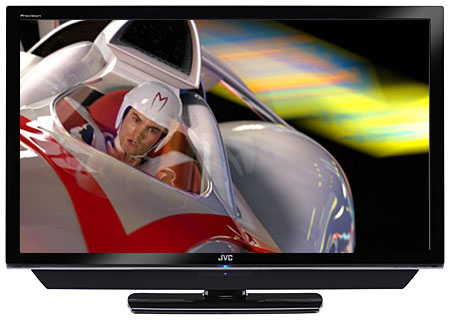JVC LT-47X899 LCD TV

Features
Like most LCD TVs with a 120Hz refresh rate, the 47X899 creates new frames to insert between the actual frames in the video signal, a process generically called frame interpolation. JVC calls its interpolation processor Clear Motion Drive III. If the input signal is 60Hz, the TV inserts one new frame between each pair of actual frames; if the signal is 24Hz, the TV inserts four new frames between each pair of actual frames.
However, unlike other 120Hz LCD TVs in my experience, the JVC offers no control to disable frame interpolation—it's on all the time. Fortunately, it's effect is generally positive, so there's no need to turn it off.
The rest of the processing is handled by a sixth-generation, 12-bit proprietary processor dubbed Genessa. The LCD panel itself has a resolution of 10 bits, which produces smoother gradations than the more-common 8-bit panels.
Another common feature found on the 47X899 is the ability to automatically adjust some of the controls according to the overall image brightness and ambient light levels. However, I generally turn all such features off, preferring not to have the TV change the picture settings automatically.
As with virtually all TVs these days, this one has several aspect-ratio settings, including Full (16:9 with some overscanning) and Full Native (16:9 with no overscanning). After selecting Full Native, I soon discovered that switching inputs causes the TV to revert to Full. This even happens whenever the HDMI signal is interrupted by the player or any other reason, which quickly became infuriating. In the material I watched, this didn't seem to affect the picture much—other than cropping 2.5% from each edge—but it could render some fine-detail scenes softer and introduce other artifacts that I'd rather avoid.























































